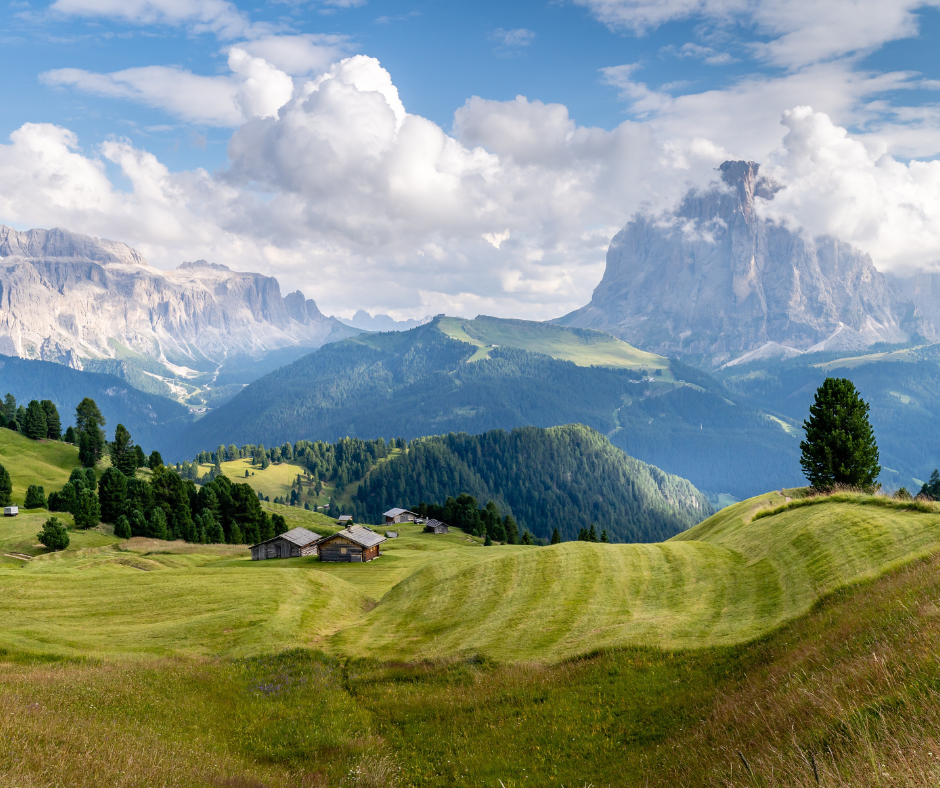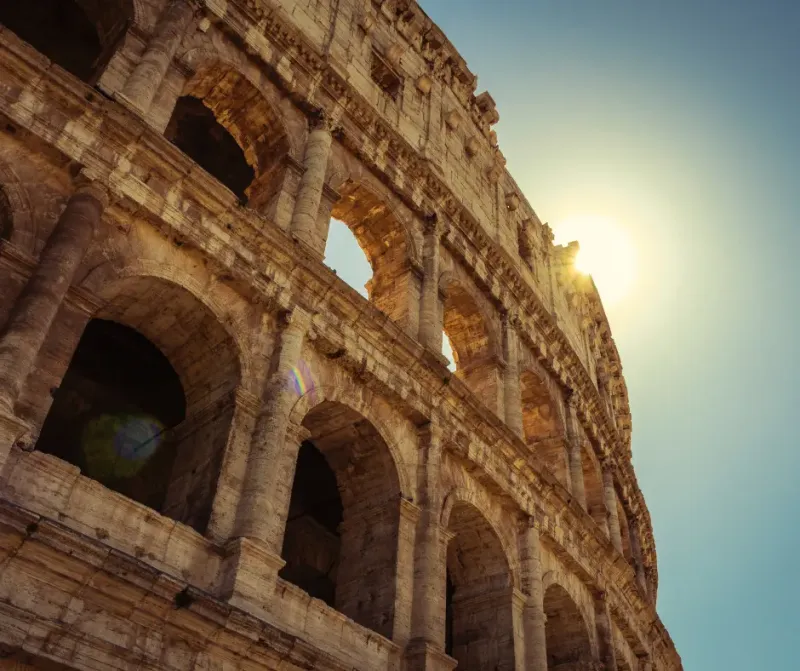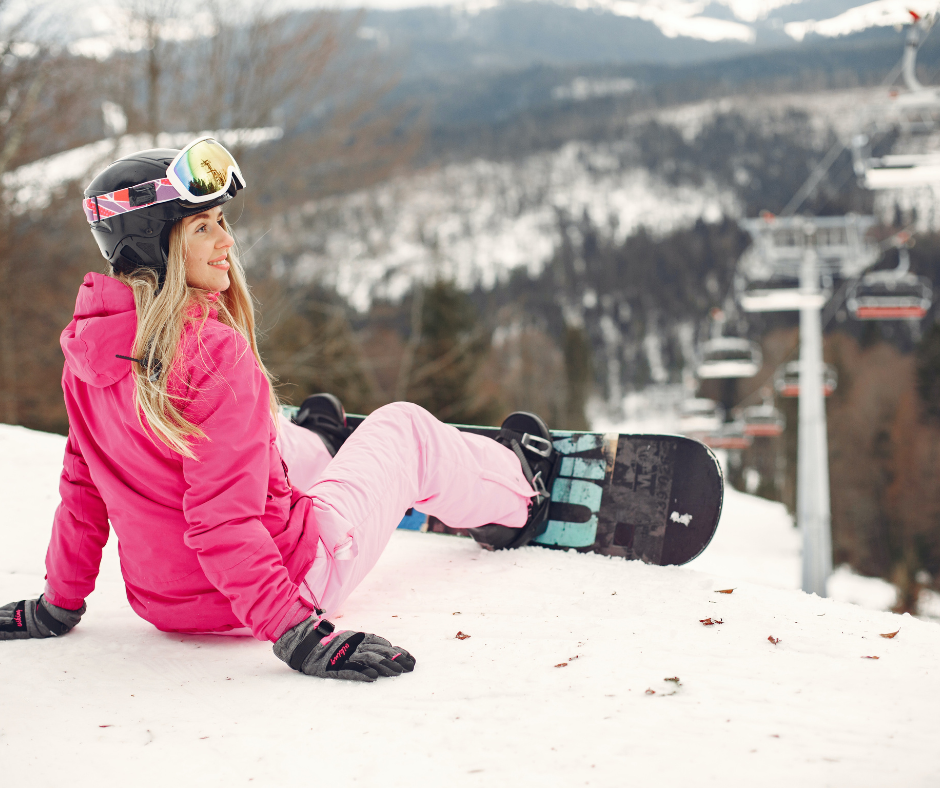Romulus and Remus, two twin brothers were born around 750 BC and abandoned by their parents, a vestal virgin and the god Mars. Condemned to die at the river banks of the Tiber, the river god Tiberinus saved the baby boys who were fostered by a female wolf and later adopted by a shepherd. Romulus and Remus, after battling in a war, returned to the hills around today's Rome to build their own city - Rome - but in a dispute about the exact location of the city, Romulus killed Remus and built the city of Rome on the Palatine hill.
The capital of the shoe-shaped country developed into the capital of the Roman Empire, which dissolved to become the capital of Christianity. Until 1861 Italy was split into many small kingdoms and sovereign states which led to a rich culture that differs from region to region.
Today Italy is one of Europe's most visited travel destinations, and nobody will deny that Italian cuisine is by far among the best in the world. And the most copied. Italy is an evergreen for the tourism industry, let's see what the country offers for digital nomads and remote working travelers.
🇮🇹 Entry requirements for Italy
- Visa: Valid Schengen visa.
- Insurance: Travel health insurance that matches the Schengen requirements. Your insurance policy needs a minimum amount of 30,000 Euros of emergency cover.
🌱 Travel health insurance for Italy
✈️ How to get to Italy
- Plane: Italy has many international airports, and you can get easily from European cities to Rome, Naples, and Sicily. Check out the many low-cost carriers, such as German Wings, or Ryanair for good deals.
- Train: Check out the Eurail passes to travel to Italy by train. There are great connections from neighboring countries such as Austria, Switzerland, and France, but also Germany has good train connections to Italian cities. Check out our train travel itinerary connecting Italy and Germany by train.
- Ferry: When on the other side of the Adria, in Albania, Croatia or Greece, you can hop on a ferry and get to the Italian coast, for example to Bari. Alternatively, you can book an overnight ferry trip from Barcelona via Sardinia to Rome with Grimaldi Lines.
🏡 How to find a place
- Good to know: You can find many beautiful vintage apartments in the historic center of Florence and Rome, tiny houses and large properties in Tuscany, campsites, monasteries, and farm stays in Italy. Be aware of the different climates of the country. The summer at Lake Como or in Brixen (Italian Alps) can be different from summer in Rome or Naples, where the pavement seems to melt under the sun, especially in August. On the other hand, accommodation in Naples and Rome during July and August is more affordable as many residents escape to cooler destinations. When traveling to Italy in winter, make sure your accommodation comes with proper heating, otherwise, take a hot water bottle with you - a lifesaver for my own travels and happily used from Peru to Portugal.
- Cost of living: In Rome, you can expect to pay around 700 to 900 Euro per month for a private room in a shared apartment. Renting your own apartment will cost you around 1,200 to 1,600 Euro.
- Airbnb: You will find a good amount of nice apartments and private rooms on Airbnb. Prices might be higher when booking closer to the arrival date, and May, June, and September are popular among tourists.
- Facebook groups: It might be worth monitoring the local Facebook groups for rental listings as it seems that sometimes people put good deals out there. For Milano, check out the Facebook groups Rome Apartments 4 Rent & Selling could be a good source for listings in the capital.
🚌 Public transport in Rome
- Rome: In Rome, you have the biggest selection of public transport, ranging from metro to tram, buses, and urban trains. There is a big selection of tickets, from single tickets to monthly plans. The Roma Pass is a convenient option for visitors. It offers unlimited access to public transportation, including the metro, bus, and tram, for a specific duration (48 or 72 hours). The pass also provides discounted or skip-the-line entry to many attractions.
- Metro: The Rome Metro consists of three lines (A, B, and C) that connect various parts of the city, including major tourist attractions. The metro is efficient, especially for traveling longer distances quickly. However, it doesn't cover all areas of the city.
- Bus: Rome has an extensive bus network that reaches almost every corner of the city. Buses are a reliable mode of transportation, offering numerous routes and frequent service. They are a great option for exploring specific neighborhoods or reaching destinations not served by the metro.
- Tram: Rome has a tram network that operates in the city center and some suburban areas. Trams are a scenic way to travel and can be useful for reaching popular tourist spots. However, the tram network is not as extensive as the bus or metro system.
- Taxis: Taxis are readily available in Rome, and you can find them at designated taxi ranks or hail them on the street.
- Uber/Lyft: Ridesharing services like Uber or Lyft are available in Rome.
🏘 Where to stay in Rome
- Trastevere: Trastevere is a charming and picturesque neighborhood located on the west bank of the Tiber River. It is known for its narrow cobblestone streets, vibrant nightlife, and an abundance of cafes, bars, and restaurants. Trastevere offers a bohemian atmosphere and a strong sense of community, making it a favorite among expats and digital nomads.
- Testaccio: Testaccio is a lively neighborhood with a diverse food scene, local markets, and vibrant nightlife. It offers a mix of traditional Roman charm and a trendy, youthful vibe.
- Pigneto: This is an up-and-coming neighborhood that has become increasingly popular among young creatives, artists, and expats. It has a bohemian atmosphere, with a variety of bars, cafes, and street art. Pigneto offers a more affordable cost of living compared to central areas of Rome while still providing good connectivity to the city center.
- Prati: Located near Vatican City, Prati is an elegant residential neighborhood known for its upscale shops, restaurants, and wide boulevards. Prati attracts expats and professionals looking for a quieter and more refined living environment while still being close to the city center. It offers excellent public transportation connections and a range of amenities.
🧑🏻💻Where to work from in Rome
Coworking spaces
- O21 Rome: O21 Rome offers a modern and well-equipped coworking space, a central location, a sense of community, and flexibility, making it an attractive option for digital nomads seeking a productive and inspiring work environment in Rome. Monthly membership costs €365.
- Famo Cose: Located in the heart of Rome, Famo Cose provides a welcoming and collaborative environment that encourages networking and interaction among its members. It is situated in a vibrant neighborhood with a range of amenities nearby. The monthly membership starts at €150.
- BSide coworking: BSide Coworking Space offers a vibrant and creative atmosphere, designed to inspire productivity and innovation. The space provides essential amenities to support a productive work environment, including high-speed internet, meeting rooms, printing facilities, and a comfortable lounge area. Membership is available for €199 Euro per month.
Coffee shops
- Necci dal 1924: Situated in the Pigneto neighborhood, Necci dal 1924 is a trendy café with a relaxed atmosphere. It offers indoor and outdoor seating, power outlets, and a menu featuring coffee, drinks, and food options.
- Ex Circus: Ex Circus in Rome is an excellent choice for digital nomads seeking a dynamic and inspiring workspace. With its unique and eclectic interior design, versatile work areas, and vibrant community, Ex Circus provides a stimulating environment for productivity and collaboration. Additionally, it is a central location and range of amenities make it a convenient and comfortable place to work while exploring all that Rome has to offer.
🚌 Public transport in Naples
- Metro: The Naples Metro system consists of three lines (Line 1, Line 2, and Line 6) that cover different areas of the city and connect to major transportation hubs.
- Bus: The city has an extensive bus network operated by ANM (Azienda Napoletana Mobilità). Buses cover a wide range of routes, including both urban and suburban areas. They provide access to destinations not served by the metro and are a common mode of transportation for locals and visitors alike.
- Funicular: Naples is known for its funiculars, which are inclined railway systems that connect the lower and upper parts of the city. There are four funicular lines: Centrale, Chiaia, Montesanto, and Mergellina. These offer a scenic and convenient way to reach hilly areas and provide stunning views of the city.
- Tram: The tram network in Naples is limited but serves certain parts of the city, including the historic center. Trams are a slower but charming way to explore Naples and experience its unique atmosphere.
- Taxi: Taxis are available throughout the city, and you can find them at designated taxi stands or hail one on the street. It's important to note that taxis in Naples operate on a metered fare system, and there may be additional charges for luggage or nighttime travel.
🏘 Where to stay in Naples
- Chiaia: Chiaia is a vibrant and upscale neighborhood located along the waterfront. It has a charming atmosphere with tree-lined streets, boutique shops, and trendy cafes. Chiaia offers a mix of modern amenities, beautiful views, and a lively social scene, making it an attractive neighborhood for digital nomads.
- Vomero: This is a more residential neighborhood perched on a hill overlooking the city. It offers stunning panoramic views of Naples and the Bay of Naples. Vomero is known for its elegant architecture, shopping streets, and a variety of dining options.
- Historic Center (Centro Storico): The Historic Center of Naples is a UNESCO World Heritage site and one of the oldest urban areas in Europe. It is a bustling neighborhood with narrow streets, historic landmarks, and vibrant markets. The area is rich in culture, history, and traditional Neapolitan charm, providing a unique and inspiring environment.
🧑🏻💻Where to work from in Naples
Coworking spaces
- Dialogue Place: Dialogue Place offers a dedicated co-working space designed to meet the needs of digital nomads. The space provides comfortable workstations, high-speed internet, and essential amenities, ensuring a productive work environment for roughly €150 per month.
Coffee shops
- Le Gran Caffè Gambrinus: This café is decorated in Art Nouveau style, and has a long history of being a meeting point for authors and actors of the Belle Epoque.
- Scaturchio: The family-run pasticceria in the center of Naples serving freshly baked sfogliatella, babà (rum cake), pastiera (Neapolitan tart), and ministeriale, a liquor-filled chocolate medallion.
- 'O Grin: This is your place for vegan food which serves delicious food just not in August when the café closes for the holidays.
🚌 Public transport in Palermo Sicily
- Bus: The bus network in Palermo is operated by AMAT (Azienda Mobilità e Trasporti). Buses cover the entire city, including the historic center and suburban areas. They are a convenient and affordable mode of transportation, with various routes connecting different neighborhoods and landmarks.
- Tram: Palermo has a modern tram system that operates 3 Lines. By using these lines you will be passing through popular areas like Piazza Politeama and Piazza Ruggero Settimo.
- Metro: Palermo's metro system offers quick and convenient connections within the city.
- Train: Palermo is well-connected to other cities in Sicily and the rest of Italy by train. The main train station, Palermo Centrale, offers regional and long-distance train services. Trains are a convenient option for exploring other parts of Sicily or traveling to other major cities in Italy.
- Taxi: Taxis are available throughout Palermo and can be hailed on the street or found at designated taxi stands. It's advisable to use licensed taxis with working meters or agree on a fare before starting the journey.
🏘 Where to stay in Palermo
- Kalsa: Situated in the historic center of Palermo, Kalsa is a charming neighborhood with a bohemian atmosphere. It is known for its narrow streets, historic buildings, and vibrant cultural scene.
- Albergheria: Albergheria is another neighborhood located in the heart of the historic center. It is characterized by its medieval architecture, ancient alleys, and bustling markets. Albergheria provides a blend of local charm, proximity to major attractions, and a variety of amenities including cafes, restaurants, and coworking spaces.
- Castellammare: Situated west of the city center, Castellammare is a vibrant neighborhood known for its seaside promenade, marina, and lively atmosphere. It offers a mix of residential and commercial areas, with plenty of cafes, bars, and restaurants.
🧑🏻💻Where to work from in Palermo
Coworking spaces
- neu [nòi]: Neunoi Coworking is a modern and vibrant coworking space with stylish and contemporary design, for supporting a collaborative environment. The space offers flexible workstations, private offices, and meeting rooms, all equipped with high-speed internet and modern amenities. Neunoi Coworking also fosters a sense of community by organizing networking events, workshops, and social activities. Membership is available for €140 per month.
- Beet Community: Located in a beautifully renovated historic building, Beet Community offers not only comfortable workspaces with high-speed internet and modern amenities but also a range of accommodation options for a seamless work-life balance. The community-focused environment encourages networking and collaboration with like-minded individuals. Coworking starts at €350 per month.
Coffee shops
- Bar Sicilia 2: This is a great spot for authentic Italian breakfast and a also cute place to work for a few hours.
- Casa Stagnitta: This charming co-living and coworking space offers a comfortable and well-equipped environment for remote work. With its stylish interior design, reliable wifi, and dedicated workstations, Casa Stagnitta provides a conducive atmosphere for productivity. It is also a place to go to for serious coffee lovers.
🚊 How to travel around Italy
- Train: The best way to travel across Italy is by using the train as they are efficient, convenient, and comfortable. They can speed up to 300 km per hour (185 miles per hour), and offer a board bistro and wifi. Train stations are usually located in the center of cities, towns, and villages and are connected with taxis, and or bus networks. Trenitalia and Italo are two train companies in Italy and you can easily check prices, schedules, special discounts, and passes via Omio. Popular train lines connect, for example:
1) Venice – Padua – Bologna – Florence – Rome – Naples – Salerno
2) Turin – Milan – Bologna – Florence – Rome – Naples – Salerno
3) Milan – Brescia – Verona – Vincenza – Padua – Venice - Car: Renting a car in Italy is fun, as long as you are not driving in Rome and trying to find parking lots on a daily base, which is really challenging. The best regions to drive a car are Tuscany, Tirol, Dolomites, and the Riviera. When renting a car, be aware of tolls, restricted driving in historic city centers, congestion, and lack of parking lots. Also, many rental cars will be manual, and Italians are known to drive fast and furious.
- Bus: Italy provides a good and affordable bus network that connects villages, towns, and all major cities. The intercity buses are comfortable, come with wifi, and are fairly clean. Check out Flixbus, one of Europe's biggest bus companies.
- Boat: Take the ferry to Sicily or Sardinia, rent a private yacht if money is no limitation, or hop on a boat across the Adria and travel to Albania or Croatia.
- Taxi: You find taxis in every town in Italy, and you see the official license plate on the side of the car. Tipping is done by simply rounding up, but you don't need to tip like you are in the city center of Chicago.
- Uber: You can find Uber in Rome and Milan, in other cities such as Verona, Florence, or Naples Uber is prohibited. Additionally, you can only find Uber Black in Italy, meaning the cars are nicer and the fees are higher.
🎖Must see
- Rome: It should be a no-brainer, but when in Italy, make sure to travel to Rome and visit the Colosseum, the Trevi Fountain, the Vatican, the Sistine Chapel, and St. Peter's Cathedral. Get a skip-the-line ticket for the sights, especially since the queue in front of the Colosseum might be long. Have a pizza on one of the beautiful old piazzas, sip an Aperol spritz or a Chianti, and walk through all the small cobbled alleys.
- Trevi Fountain: Did you know that when you sling a coin into the Trevi Fountain, you will return to Rome and find love? This is the story of the fountain which - pre-covid - collected an annual amount of 1.5 million Euro in coins. The money is collected each year and given to the Caritas Roma.
- Volcanoes: Etna, Stromboli, and Vesuvio are the three active volcanos of Italy. You can visit the ruins of Pompeii and witness the destruction of the Vesuvio's eruption in 76 AD. The volcano is dormant since 1944.
💡Good to know
- Internet: The average internet speed is 54 Mbps download and 19 Mbps upload.
- Sim cards: There is 5G in Italy, although limited to the big cities and you get the best coverage with Wind Tre.
- Digital nomad community: Italy has so many beautiful little nooks, charming towns, buzzing cities, and remote villages, that it is not really straightforward where to find digital nomads and work-from-home folks. The most popular tourist attractions, such as Florence, Venice, and Milano come with high price tags, and the cost of living can go up to 2,500 - 3,000 Euro per month if you rent a nice place in the city center and want to eat out some times per week. Therefore, let's check the smaller towns. But the first action step is: Join the Facebook group Digital Nomads Italy.
- Rome: As farther north, you travel (as we come from Palermo in Sicily), the more you might spend on rent, groceries, restaurants, and transport. For Rome, you should calculate a monthly budget of 2,000 Euro minimum for a solo traveling nomad including rent, coworking, and living expenses. Be aware of the season when choosing Rome, as the city can get brutally hot in July and August.
- Cost of living: When traveling on a small to medium budget, check out Padova, Genoa, Bari, and Treviso. In general, the cost of living is highest in the north of Italy and reduces as further south you go.
- Climate: Italy's climate is Mediterranean with hot and dry summers and rainy winters. With a length of 1,200 km, Italy shows some microclimates and you can expect much colder winter months in the Italian Alps (north of Florence) than in Naples or Sicily. Summers in Rome and Tuscany (the center) can be extremely hot. The south of Italy (south of Rome) including Sicily can be brutally hot, which is hotter than extremely hot. Winters in the south of Italy are mostly overcast, rainy, and very windy.
- History: Although Rome is more than 2,000 years old, the state of Italy exists only since 1861. Before that, the country was divided into a collection of smaller sovereign states. From 1925 until 1945, Italy was ruled by dictator Benito Mussolini. King Umberto ruled the country for 36 days in May 1946 and is known as the May King. He was exiled to Portugal and since June 1946 Italy is ruled as a Republic.
- UNESCO: You can find 58 UNESCO World Heritage sites in Italy.
- Culture: Cesar's ancient Rome, the Medicis' wealthy Florence, pilgrims' long waits in vibrant Venice - all of Italy's epochs have influenced the country's culture, especially in food, family, architecture, music, arts, and religion. It is impossible, to sum up, Italy's cultural highlights in just one paragraph. Every corner of the country has its unique heritage and cultural treasures. Visit the local museums, the international exhibitions, and the sites, and taste the local cuisine.
🚧 What to avoid
- Pickpocketing: Once Rome was famous for being Europe's capital for pickpocketing. But the recent decade shows a decline in pickpocketing. However, it is still very common, especially in Rome, Florence, and other touristy places, so always keep an eye on your belongings and don't keep your backpack with all your valuables on the chair in a café, when you use the bathroom. To show that this table is occupied, use a bottle of water, a cheap pair of sunglasses, or similar items.
- Air quality: The air quality in Italy is not the best, in fact, it is moderate. The worst regions in Italy are Campania, Piedmont, and Lombardy.
- Overtipping: Remember, you are not in Manhattan, rounding up is enough and custom.
- Drinking cappuccino after 11 am: Italians don't drink cappuccino after 11 am, as it is just a morning pleasure. Espresso bars are often crowded and people drink their espresso standing and chatting to their colleagues and friends.
- Cutting spaghetti with a knife: I always feel sorry for Italian cuisine which is one of the most popular worldwide but oftentimes done so wrong. Dishes like Fettuccine Alfredo or Pizza Hawaii do not exist in Italy, and Italians might get an increased heart rate when they watch foreigners cutting spaghetti into little pieces. Talking about spaghetti, if you want to eat it like Italians, skip the spoon and knife and simply use the fork.
- Dressing inappropriately: Visiting churches and other religious sites in Italy should be done by wearing appropriate clothes. No flip-flops, shorts, tops, or top-less men, please.
🚴🏻♀️ How to stay healthy
From skiing in the Italian Alps, kite surfing at the Adria, or hiking in Tuscany - Italy offers a big variety of places for outdoor activities.
Stay active
- Kite surfing: This fun sport can be done in Sicily, for example in Lo Stagnone or Marsala.
- Hiking: You can find hiking trails in Sicily, for example with Komoot.
Health risks
- Water quality: Many local people do not trust tap water, and therefore, you should drink bottled and/or filtered water instead.
- Air quality: The air quality in Italy is generally moderate.
⚓️ Long stay
- Digital nomad visa: Italy's government is planning on launching a digital nomad visa but it is not available yet. Once it is available, we will update our article accordingly.









